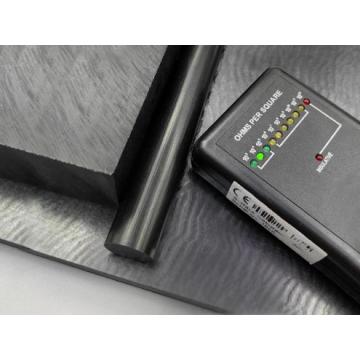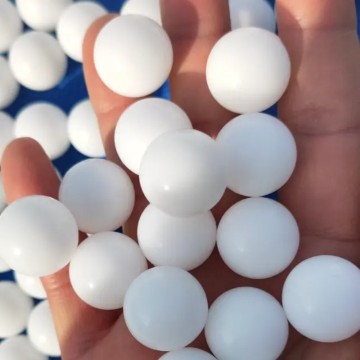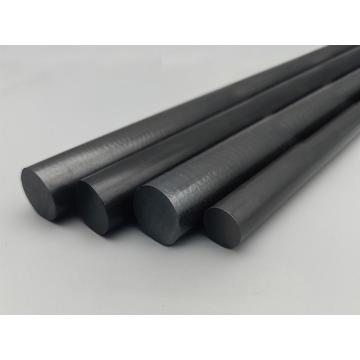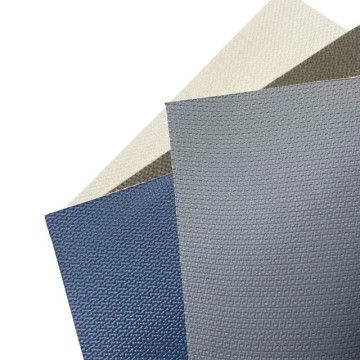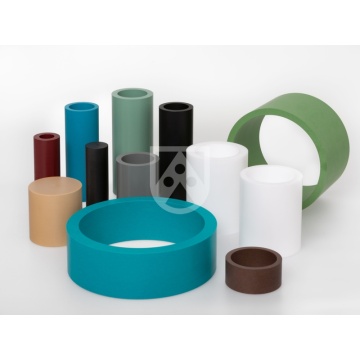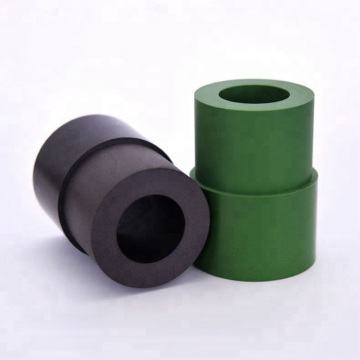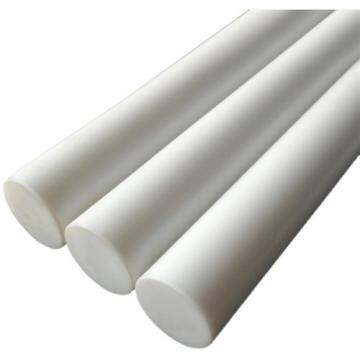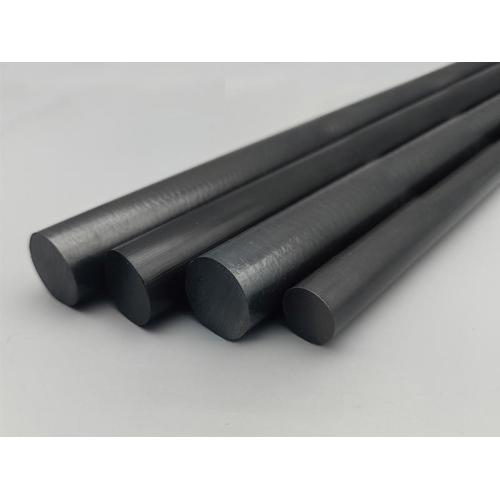
PTFE polytetrafluoroethylene with carbon fiber rod
- Min. Order:
- 1 Kilogram
- Min. Order:
- 1 Kilogram
- Transportation:
- Ocean, Land, Air, Express
- Port:
- Shenzhen, Hongkong, Guangzhou
Quantity:
Your message must be between 20 to 2000 characters
Contact NowBasic Info
Basic Info
| Supply Ability: | 1000 |
|---|---|
| Payment Type: | T/T,Paypal |
| Incoterm: | FOB,CFR,CIF,EXW,DDP,DDU |
| Transportation: | Ocean,Land,Air,Express |
| Port: | Shenzhen,Hongkong,Guangzhou |
Product Description
Product Description
PTFE (polytetrafluoroethylene) carbon fiber-reinforced rods are manufactured by mixing PTFE resin powder with T-type carbon fibers, followed by extrusion molding or compression molding to produce rods of specified diameters. In addition to the inherent properties of PTFE, such as excellent high and low-temperature resistance, good chemical corrosion resistance, superior self-lubrication, and non-stick properties, The addition of carbon fiber further enhances the rod's hardness, strength, electrical conductivity, low density, and wear resistance. These rods are widely used in industries such as pharmaceuticals, dye industry containers, reactors, corrosion-resistant components, track seals, chemical containers, sealing materials, machinery, construction, and transportation.
Exploring the Characteristics and Applications of Carbon Fiber-Reinforced PTFE Rods
Carbon fiber-reinforced PTFE rods, as a high-performance composite material, have garnered significant attention across various industrial sectors in recent years. This material combines the reinforcing properties of carbon fiber with the unique characteristics of polytetrafluoroethylene (PTFE), resulting in exceptional overall performance.
I. Key Characteristics of Carbon Fiber-Reinforced PTFE Rods
1. Corrosion Resistance: Carbon-fiber-reinforced PTFE rods exhibit outstanding resistance to chemical corrosion, capable of withstanding the erosion of most acids, alkalis, organic solvents, and other corrosive media, ensuring stable long-term performance in harsh environments.
2. High Strength: The incorporation of carbon fiber as a reinforcing material significantly enhances the mechanical strength of carbon-fiber-reinforced PTFE rods. They possess high tensile strength and compressive strength, capable of withstanding heavy loads without deformation or damage.
3. Low Friction Coefficient: Carbon-fiber-reinforced PTFE rods inherit the low friction coefficient characteristic of PTFE, enabling reduced energy loss and wear during friction contact, thereby enhancing equipment efficiency and service life.
II. Application Fields of Carbon-Fiber-Reinforced PTFE Rods
1. Chemical industry: In chemical production, many equipment and pipelines must withstand corrosion from corrosive media. Carbon-fiber-reinforced PTFE rods are widely used in the manufacture of critical components such as chemical pumps, valves, and seals due to their excellent corrosion resistance, ensuring the safety and stability of chemical production.
2. Mechanical Industry: In mechanical manufacturing, carbon-fiber-reinforced PTFE rods are commonly used as materials for moving components such as bearings and guide rails. Their low friction coefficient and high strength enable mechanical equipment to operate more smoothly and efficiently while reducing maintenance costs.
3. Aerospace Industry: Aerospace vehicles impose extremely stringent requirements on materials, necessitating a combination of high strength, lightweight properties, and corrosion resistance. Carbon-fiber-reinforced PTFE rods, with their outstanding comprehensive performance, have found widespread application in the aerospace field, such as in the manufacture of aircraft engine components and satellite structural parts.
In summary, carbon-fiber-reinforced PTFE rods, with their unique properties and broad application areas, demonstrate significant market potential and development prospects. With the continuous advancement of technology and the rapid development of industry, it is believed that carbon-fiber-reinforced PTFE rods will continue to leverage their unique advantages in an increasing number of fields.

Types and Applications of PTFE Fillers
Common fillers for PTFE include glass fiber, carbon fiber, graphite, molybdenum disulfide, etc., which can enhance the material's mechanical strength, wear resistance, thermal conductivity, and other properties.
I. Types of PTFE Fillers
PTFE, as an excellent engineering plastic, has widespread applications in many fields. However, pure PTFE still has room for improvement in certain aspects, such as mechanical strength, wear resistance, and thermal conductivity. To address these shortcomings, fillers are typically added to modify the material. The following are some common PTFE fillers:
1. Glass fiber: Glass fiber is a high-performance inorganic non-metallic material with high tensile strength and excellent heat resistance. When added as a filler to PTFE, it significantly enhances the mechanical strength and rigidity of the composite material while preserving the original superior properties of PTFE.
2. Carbon fiber: Carbon fiber possesses high strength, high modulus, and high-temperature resistance. When used as a filler, it enhances PTFE's strength and wear resistance, enabling it to perform better under high-load and high-speed operating conditions.
3. Graphite: Graphite is an excellent solid lubricant. When incorporated into PTFE, it significantly reduces the material's coefficient of friction, improves wear resistance, and extends service life. Additionally, graphite has good thermal conductivity, which helps improve PTFE's thermal conductivity.
4. Molybdenum disulfide: Molybdenum disulfide is also a solid lubricant, similar to graphite, which can reduce PTFE's coefficient of friction and improve its wear resistance. Additionally, molybdenum disulfide has high-temperature stability, enabling PTFE to maintain good lubrication performance even in high-temperature environments.
II. The Impact of Fillers on PTFE Properties
The addition of fillers not only enhances PTFE's mechanical strength, wear resistance, and thermal conductivity but also improves its processability. For example, the addition of glass fibers and carbon fibers increases PTFE's melt viscosity, making it easier to process and form. Additionally, these fillers reduce PTFE's shrinkage rate, enhancing the dimensional stability of the finished product.
Furthermore, fillers can impart special properties to PTFE. For example, the addition of graphite and molybdenum disulfide can enhance PTFE's self-lubricating properties, making it suitable for manufacturing bearings, seals, and other components requiring low friction coefficients. Additionally, these fillers can improve PTFE's corrosion resistance, enabling it to maintain excellent performance even in harsh environments.
In summary, by appropriately selecting the type and proportion of fillers, the performance of PTFE can be significantly improved, expanding its application scope. In future research and applications, we can further explore new filler materials and composite technologies to meet the needs of more fields.
Related Keywords
Related Keywords


